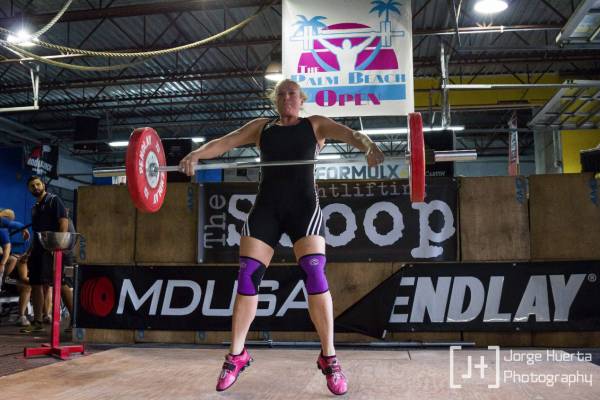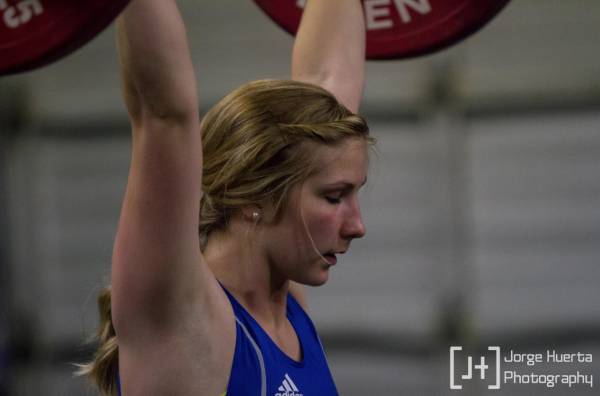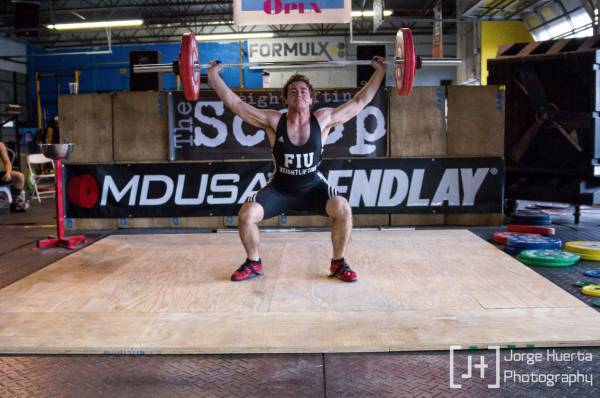Think back to when you last attempted a personal record. How many plates did you have on the bar? What color were they?
The Theory Behind Red Plates
When I visit gyms, I can almost always guarantee all of the 10kg, 15kg, and 20kg plates look like they have seen better days. It’s not surprising that they get used more regularly. Particularly in CrossFit gyms, where workouts may have high volume in snatches or cleans and the prescribed weight will be in the 35-60kg range, which doesn’t require any plate above 20kg.
And what I also often see is a stack of 25kg plates sitting in the corner with little wear and tear – sometimes, even dust settled on them. I have seen this in my own gym where every color but red (the International Weightlifting Federation (IWF) sanctioned color for the 25kg plate) seems to be in frequent use.
“What I often see is a stack of 25kg plates sitting in the corner with little wear and tear – sometimes, even dust settled on them.”
I have a theory on this, and I am confident it has a lot to do with the fact that big, thick, heavy plates – in particular those colored red – make people nervous. I often encourage my students to use the red plates as soon as they are able, and frequently I am met with hesitation or a comment about the reds being “heavy.” And I think to my own coach’s words: “Stop being scared! It’s the same weight!”
So, What’s the Difference?
Why does this matter? As long as the bar has the right weight on it, why should it matter what color or weight plates you use to get there? In short, it doesn’t necessarily have an immediate detrimental impact. However, there are a couple of things to consider:
- A barbell’s longevity can be improved by loading the appropriate numbered and weighted plates onto it. A 25kg plate is designed to absorb the drop from an overhead height while absorbing the majority of the contact and minimizing the vibration on the barbell. A barbell loaded with multiple lower-weighted plates will increase the amount of shock and vibration the bar is subjected to.
- Plate longevity is affected by both the surface you are dropping onto as well as the composition of the plate itself. A 25kg plate is designed to absorb the impact of being dropped (the Eleiko red 25kg plate is tested for 5,000 drops). It will absorb a drop from overhead on its own, and better than two to three plates of an equivalent total weight.
In short, the fewer plates you use for your lift, the less damage to both the barbell and the plate.

Why Red Should Matter to Athletes
Unless you are a gym owner, this may not be something you think about or care about. So, as an athlete, does it really matter if you are using a green 10kg and a yellow 15kg to load your bar to 65kg?
If you are planning on competing in weightlifting in the future or planning on competing in a CrossFit competition that will have a ladder of some sort, then it definitely matters.
“In competition, you will never have the ability to choose what color plates or how many are loaded.”
In weightlifting competition, as soon as the bar reaches above 70kg for women and 75kg for men, the bar must be loaded with 25kg red plates (and two 2.5kg steel collars). Although it is common to see blue plates in CrossFit competition, the increase in weights lifted by the athletes in general has meant the number of red 25kg plates is also increasing on competition days.
Psychologically, we get comfortable with where we train, what we train on, and whom we train with. We find it easier to throw a 10kg plate on either side of our bar to make it 65kg, rather than unload the bar and place one 25kg plate on. Besides, two plates looks better than one, right?

Although this may seem harmless and convenient, you are doing yourself more harm than good. In competition, you will never have the ability to choose what color plates or how many are loaded. Your bar will always be loaded with the minimum amount of plates to reach your attempted weight. So, if you know that about the competition scenario, you should train how you’re going to compete for the psychological benefit that will have.
See Red in Your Future
During the time I have spent coaching and lifting, I have found myself pushing my athletes to use the reds as soon as possible. I have a few reasons:
- It settles my athletes. Using the plates allows my athletes to get used to seeing red on the bar and not freaking out about it.
- It simulates the competition environment. The closer to a competition environment you can get in training, the less jitters you will have on game day and the better performance outcome.
- It intimidates the competition. This might seem unusual, but nothing gets peoples’ attention like someone throwing red plates on the bar with little hesitation or worry.
Having pushed myself and my athletes to do this, I find the results speak for themselves. All of my athletes show more confidence in handling the bar. Our equipment is also faring better. And overall, the transfer from the training platform to the competition platform has been smoother. There is no fear of seeing red plates on the bar anymore.

Give It a Try
At the end of the day, what matters is the weight on the bar. But the way you go about loading that weight can be important to the long-term athlete and the psychological development of the individual.
Consider, the next time you train, which color plates are you going to use? Perhaps its time to dust off those 25kg reds.
Read more on lifting:
- Women and Weightlifting (and How I Fell In Love)
- The Benefits of Weightlifting Meets for Specific Skill Levels
- Why to Include Weightlifting in Your Warm Ups
- What’s New On Breaking Muscle Today
Photos courtesy of Jorge Huerta Photography.






